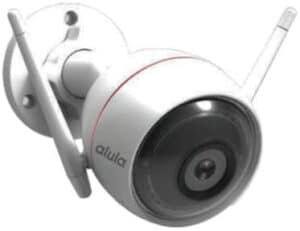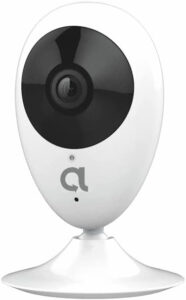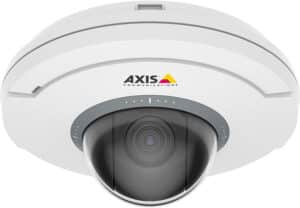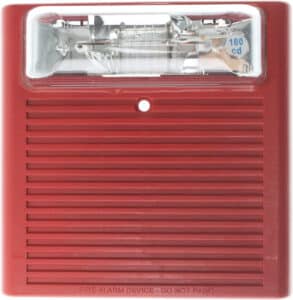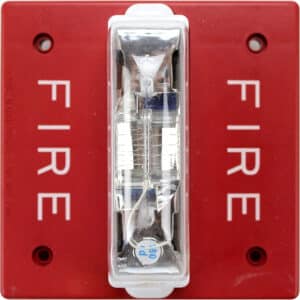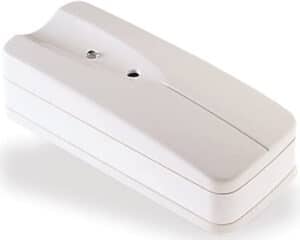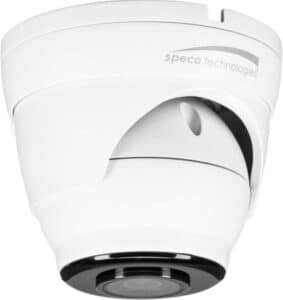Unique Features of a Smart Home Security System Every Home Owners Should Have
Imagine coming home after a long day at work, only to find out that your home has been burglarized. The thought itself sends chills down one’s spine. Unfortunately, home burglaries are a common occurrence, with some happening even during broad daylight. As a homeowner, protecting your home and your loved ones should be top of your priority list.
This is where a smart home security system comes into play. But, not all home security systems are created equal. In this blog, we’re going to explore the unique features of a smart home security system that every homeowner should have to ensure maximum protection.
Whether you’re a new homeowner looking to secure your home or an existing homeowner looking to upgrade your security system, this blog is for you. So, grab a cup of coffee, sit back, and let’s dive into the world of smart home security systems.
If you need a guide to home automation integration for your smart home system, read more here.
Table of Contents
Facial Recognition Technology: How It Works and Why It Matters for Home Security Systems
Facial Recognition technology has quickly gone from science fiction to reality. With the ever-increasing use of smartphones and social media networks, facial recognition technology has grown in popularity and has become even more practical and accurate for use in home security systems.
Let’s take a look at how this technology works and why it’s becoming so important in security systems.
How Facial Recognition Technology Works:
Facial recognition technology uses a unique biological identifier: your face. Each human being has a unique face shape, which includes differences in height, width, and length. Your face also has its own unique characteristics, such as your cheeks, nose, and eyes. These unique characteristics also change as you age.
Facial recognition technology works by capturing and storing facial data, which will then be compared to a database containing millions of faces. If a match occurs, the security system will try to identify the specific person whose face it scanned.
Examples of Facial Recognition Technology:
When facial recognition technology was first invented, it was primarily used to measure a person’s physical features. Today, it’s being used in far more places, including security systems, schools, and airports.
Systems with facial recognition technology can identify criminals and suspects after a crime has been committed. If a criminal tries to break into a home or vehicle, or even walk into a business, the security system will recognize their face and notify authorities immediately.
Schools and universities are starting to use facial recognition technology to keep track of their students. If a student doesn’t want to use their student ID anymore, the system will alert authorities. If a student is caught fighting, the system will notify authorities.
Airports are also starting to use facial recognition technology to help travelers. Instead of being required to show a ticket or boarding pass to their gate agent, travelers can now simply walk through the gate by standing in front of a scanning camera.
24/7 Remote Access and Monitoring: How Smart Home Security Systems Keep You Connected at All Times
Smart home security systems allow you to monitor your home remotely, from your smartphone, computer, or tablet. You can control your home’s lights and home security devices, or watch live video feeds of your home, anytime, anywhere.
These security systems are designed with both convenience and security in mind, making it easy for you to keep an eye on your home while you’re away.
Here are a few more ways smart home security systems can improve your home security:
Monitor your home from your smartphone, computer, or tablet: You can access your security system remotely, no matter where you are.
- Receive alerts: Receive alerts when something goes wrong, so you can quickly alert authorities or make the call yourself.
- Secure your home: Secure your home’s entryways so that only authorized personnel can enter your home.
- Monitor all activity: See who is entering and leaving your home and monitor any suspicious activity.
- Record footage: Record footage from your home’s security cameras so you can review any suspicious activity.
- Integrate with other home devices: Integrate your security system with other home devices such as smoke detectors, motion sensors, and more.
- Automate your home: Automate your home using voice commands or a smartphone app so you can control your security system and other home devices, even when you’re away.
- Intelligent Motion Detection: How Advanced Algorithms Help Reduce False Alarms and Improve Home Security
When installed properly, a home security system can help you protect your home and valuables from intruders. However, even the best security systems can make mistakes from time to time. Two common issues that security systems occasionally suffer from are false alarms and system malfunctions.
It may be frustrating to have false alarms from your security system, but keep in mind that false positives are actually common, especially in older security systems. Older security systems can be fooled by common household activities such as opening or closing a door or window, or even by common wildlife such as squirrels or raccoons entering your yard.
Newer home security systems employ more sophisticated algorithms which help them more accurately identify whether a particular event is cause for concern or not. These more advanced algorithms are based on advanced data analysis and pattern recognition technologies. These advanced algorithms make it easier to detect both motion and sounds, thereby reducing false alarms.
Smart Locks and Access Control: How Automated Locks and Two-Factor Authentication Improve Home Security
Home security is a broad concept, but one of the ways to achieve it effectively is with a smart lock, which can give you more control over who has access to your home – and allow you to keep them out if they’re not supposed to be there.
Smart locks use NFC technology (near field communication) or Bluetooth to unlock doors and let you grant or deny access to whomever you desire. Some models can integrate with an app on your smartphone, allowing you to unlock doors remotely, receive alerts if the door is opened when you’re not home, and keep track of who is coming and going.
Smart locks aren’t just for security purposes, though. They can help you save time and effort, too. For instance, you can unlock doors when you approach them with the keypad, instead of carrying around a key – or worrying about getting locked out if you lose or misplace one. Some models can even unlock doors using facial recognition technology, which can make it more convenient for people with smart home devices, such as Amazon Alexa or Google Home.
Environmental Monitoring: Detecting Smoke, Carbon Monoxide, and Other Hazards Using Smart Home Sensors
Fires, gas leaks, carbon monoxide, floods, and other hazards can cause destruction and damage not only on your property but on your health and wellbeing as well. Environmental monitoring using a smart home sensor can help you detect these hazards in your home.
An environmental monitoring sensor can help you detect environmental hazards such as:
- Carbon monoxide poisoning
- Gas leaks
- Smoke/fires
- Floods
- Thefts
- Unattended cooking
- Falling or tripping hazard
- Natural disasters
- Temperature extremes
These features are important to have in a home security systems because they can detect potential threats before they become hazardous and cause damage or injury.
Smart home sensors can detect these environmental hazards in real-time and alert you or emergency services as soon as they are detected. This can help you take action quickly and prevent any further damage or loss.
Voice Control: How Voice-Activated Home Security Systems Provide Convenience and Enhance Accessibility
If you struggle to get up and turn on the lights, take medications, or perform other tasks when you’re sick or injured, a voice-activated home security system can make it easier. These systems allow you to use your voice to control a variety of different devices in your home, including lights, alarms, thermostats, and shades. This can enhance accessibility and increase convenience, allowing you to perform daily tasks without having to get up from your bed or couch.
Voice activation systems can also allow you to control your home’s security and convenience settings remotely, giving you the ability to control your home even when you’re away from home. This can enhance accessibility and give you greater peace of mind – especially if you’re sick or injured and are unable to check on your home yourself.
Many voice-activated home security systems allow you to control multiple smart devices in your home at the same time. This can help you save time, as you won’t have to switch inputs or push buttons to control different devices.
Customizable Alerts and Notifications: How Smart Home Security Systems Keep You Informed and Empowered
Customizable alerts and notifications are a crucial component of any smart home security system. These systems can provide regular alerts about unusual activity in your home, such as a door or window opening or specific lighting changes.
Good security systems can also send you notifications about specific events such as triggered alarms, power outages, and issues with your thermostat. They can also provide alerts about potential intruders, which can help you locate them in your home and quickly call the police.
In addition, many security systems will send you notifications when important events occur, such as the arrival of a family member home, the arrival of a package, or the waking of a baby.
Indoor and Outdoor Video Surveillance: The Benefits of High-Quality Smart Cameras for Home Security
The rise of smart technology has irrevocably altered the way we view security. Smart sensors, cameras, and alarms combine to create a versatile, easy to use set of protective measures that can deter break-ins, catch criminals, and even reduce home insurance costs.
Although a video surveillance system may sound like an intimidating proposition, installing high-quality security cameras in your home is simple, affordable, and incredibly effective. There are a number of ways you can use smart security cameras to keep your home safe – here are just a few:
- Monitor your home from a remote location: Surveillance cameras allow you to monitor activity in your home while you’re away, whether you’re at the office, the airport, or on a vacation. This can give you the peace of mind of knowing that your home is safe while you’re away.
- View live streams from multiple locations: If you live in a large home, chances are you’ll want to monitor activity in multiple rooms at a time. Surveillance cameras allow you to view multiple rooms simultaneously, giving you the flexibility to see what’s happening in different parts of your home.
- Receive instant alerts: Most security cameras are able to send immediate alerts to you whenever something unusual happens, such as when someone is entering your home, your car is being tampered with, or there is movement outside your home.
Artificial Intelligence and Machine Learning: Emerging Technologies That Are Revolutionizing Smart Home Security
Last unique features every home owners should have in their home security is the use of Artificial Intelligence and Machine Learning. These technologies are revolutionizing the way we protect our homes and provide an extra layer of security.
AI and ML can be used to detect unusual or suspicious activity in real-time and alert the home owners. AI and ML can also be used to automate the home security system, allowing it to adjust to changing environments, respond to different threats, and proactively detect potential threats before they occur.
This can then be used to create a more secure home environment for everyone. AI and ML are also capable of learning from past incidents, allowing it to better handle similar situations in the future. This means that the home security system can continuously improve over time and provide better protection.
Conclusion
So, what have we learned about the unique features of a smart home security system? We now know that there are a variety of technologies that can make our homes safer and more secure. From motion sensors to smart locks, these features have helped to revolutionize home security and give homeowners greater peace of mind.
If you’re looking for an e-commerce store that offers a range of affordable and easy-to-use DIY home security products, then Xcessory Zone is the way to go! Their products are top-quality, reliable, and user-friendly, making them perfect for all kinds of homeowners.
As a busy working mom, I know how stressful it can be to worry about the safety of my family and our home. That’s why I wholeheartedly recommend Xcessory Zone’s smart home security products to anyone looking to improve their home’s security. You won’t regret it!
So, what are you waiting for? Visit Xcessory Zone today and start browsing their selection of amazing DIY home security products. And don’t forget to take advantage of their incredible discounts and promotions!
In conclusion, investing in a smart home security system is something that every homeowner should consider. It’s a fantastic way to protect our loved ones, valuables, and property. With Xcessory Zone, you’ll have everything you need to keep your home safe and secure. So give them a try today!
FAQs
What are some unique features of a smart home security system that every homeowner should have for better security?
The unique features of a smart home security system include intelligent sensors, facial recognition technology, remote access control, and real-time alert notifications. These features provide homeowners with advanced security monitoring, automatic emergency response, and increased convenience.
How do smart home security systems differ from traditional security systems in terms of features and benefits?
Smart home security systems differ from traditional security systems in features and benefits as they offer wireless connectivity, real-time monitoring, and advanced functionality through home automation. Smart home security systems enable homeowners to control and monitor their security system from their smartphone or tablet, making it more convenient and easy to use.
What are some of the benefits of a DIY smart home security system compared to a professionally installed one?
A DIY smart home security system offers homeowners flexibility, affordability, and customization options as they can install and configure the system according to their needs. On the other hand, a professionally installed smart home security system offers expert installation, maintenance, and round-the-clock monitoring. Ultimately, the choice depends on the homeowner’s preference, budget, and security needs.
Meet Our Partners!




